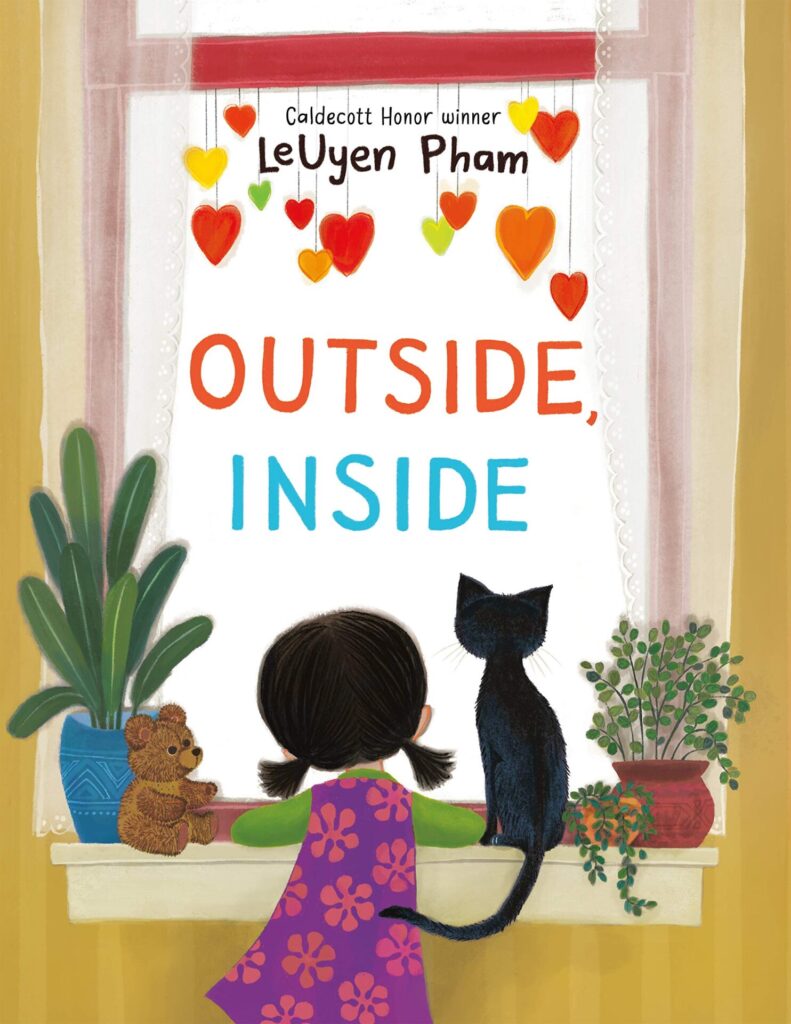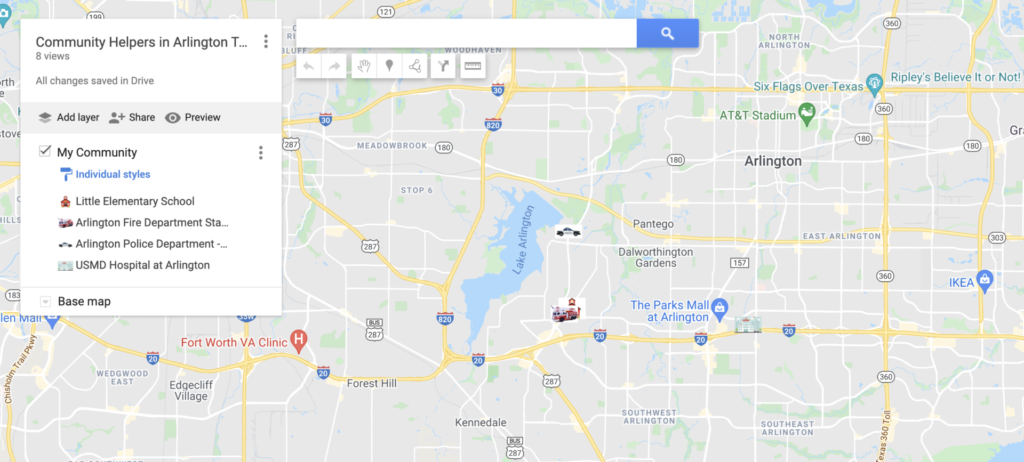
Why I Picked It Up:
During our back-to-school meetings, an administrator said to us that we had 2nd graders who had never known school before COVID! It really painted a picture that had eluded me. I am coaching teachers in a hybrid model that seemed tough on its own, but I realized that their kids didn’t know anything different from half of the teachers I work with. However, the kids do know that life changed. It’s hard for me, as an adult, to wrap my head around this event and this picture book helps students see the big picture of the COVID pandemic.
Why I Finished It:
I really enjoyed the short text that perfectly captured the event and the beautiful pictures. I love the deeper context of physical outside/inside to emotional inside/outside.
Who I Would Give It To:
Elementary teachers, Outside, Inside is a great addition to your beginning of the year read-alouds. Not only is it timely, but it could start powerful conversations about how we can all work together. It would also be a great addition to a social studies set on community helpers and workers.
Integration Ideas:
Text-to-Text Connections – Communication – Listening, Speaking, and Research
Outside, Inside is just begging to be talked about! I don’t think too much is needed to get the students to start thinking about connections. Have students think about the positives of being forced inside – What did they do at home? Did they try new things? Who did they learn new things about or get to spend more time with? Ask about what they missed, if they saw the essential workers, etc. All of these connections can become writing topics for the students. Maybe they want to write a narrative (later) on how they learned to cook with their grandma or how their cat didn’t like them all being home, etc.

Social Studies – Community Helpers (essential workers)
Point out the community helpers you see in Outside, Inside – police, firefighters, hospital workers, etc. Talk about where these essential workers are located in your community. Then, to help students visualize, create your own Google Map marking the places that are relevant to your students and your community.
A Google My Map is like an old-school transparency that you get to put on top of Google Maps that includes your own locations. It’s different than regular Google Maps because the information is saved into your Google Account (translation: it’s safe because you’re not adding anything to the public Google Maps). You add place markers to your map, and then get a unique link that shows your “transparency” overlaid on Google Maps. You can add your own icons to mark the locations, and your own photos and text to the place markers to make it more relevant. Go to Google My Maps and begin the creation process! Bonus – send the link home with students so they can have conversations with family members about their houses are in relation to the community helpers.
Example: Google Map – My Community Helpers.
Visual Supports
Storytelling is not all done with words in this story. In fact, there aren’t many words in Outside, Inside at all and they’re very high-level. Much of the story is told through the illustrations, and the color of the illustrations also contributes to the mood and tone of the story. In the beginning, everything is brightly colored, true to life, and as you would expect. However, as everyone moves inside, notice what happens to the color palette. Ask students to comments on the illustrations and see if they notice it! The mood of the story definitely turns more somber once everyone goes inside, but ask students how the illustrations support or contribute to that mood?


Then, once students are observing the illustrations, notice the spots of color throughout the rest of the story. What does it mean? Why did the illustrator choose to put color in that place? How does the use of color mirror the story line? How does the end of the book leave you feeling? How does color impact that feeling?
Character Feelings and Change
There’s one character that appears on every page in Outside, Inside – the cat! This expressive feline is sometimes hard to spot but is a thread that is woven throughout the story. While a cat can certainly be hard to read, there are certain aspects of expression that students should be able to pick up on, and there is definitely a change from the beginning to the end of the story.



Additionally, as one might expect when one event affects everyone in the world, people have vastly different feelings about it. Notice the people in the illustrations and see if students can express how they’re feeling. This would be a great time to use Character Trait/Feelings Cards to help students increase their vocabulary around feelings and ultimately make connections, maybe for themselves or maybe to another character in a book they’re reading.






Leave a Reply